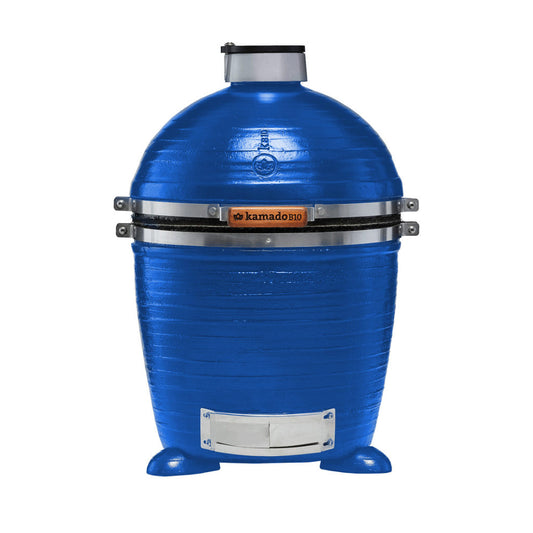Kamados are ancient ovens that have become a trend among food and barbecue lovers. Their history dates back more than 3,000 years in Japan and China, where clay pots were used to cook over charcoal. Over time, this technique evolved into the modern ceramic kamados we know today.
How does a kamado work?
The secret of the kamado lies in its refractory ceramic body . This material maintains heat consistently and evenly, allowing for cooking with minimal charcoal consumption . Thanks to its design and adjustable air inlets, the temperature can be precisely controlled , from 70°C for smoking to over 400°C for searing meats or making crispy pizzas.
Furthermore, because it operates efficiently, the kamado generates very little smoke . This has a major advantage: it doesn't require an extraction system or chimney , making it ideal for outdoor use, as well as for terraces or spaces where a traditional barbecue would be difficult to set up.
Versatility in the kitchen
A kamado isn't just a barbecue. It's a true all-in-one :
-
🔥 Grilling : juicy meats with a unique flavor.
-
🌿 Smoking : fish, ribs, cheeses or vegetables with an unparalleled aroma.
-
🍞 Baking : breads, pizzas and pastries.
-
🍲 Slow cooking : American-style stews and pulled pork.
Advantages of cooking on a kamado
-
Incomparable flavor thanks to charcoal and ceramic sealing.
-
Energy efficiency : uses less charcoal than a traditional barbecue.
-
Low smoke : no extraction or chimney required.
-
Durability : Made with materials resistant to high temperatures and weather.
-
Gourmet experience at home, whether for family gatherings or with friends.
Who is a kamado for?
Kamados are ideal for those who enjoy outdoor cooking , seek authentic flavor , and want to experiment with different cooking styles. From amateurs to professional chefs, everyone can benefit from this versatile ceramic oven.
In conclusion, a kamado is not just a barbecue: it's a cooking tool that opens up a world of possibilities, using little charcoal, with minimal smoke, and without the need for additional installations.





